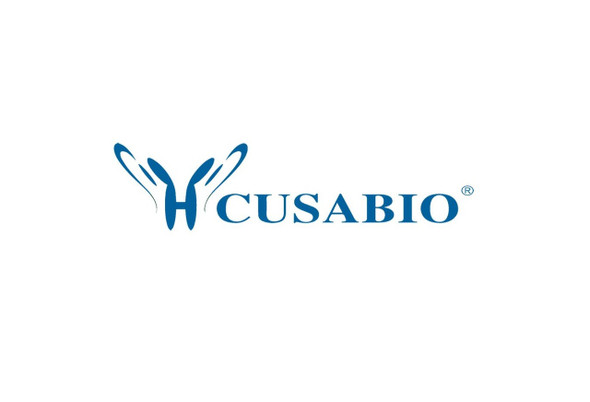Cusabio Bos taurus Recombinants
Recombinant Bovie Tumor necrosis factor (TNF), partial | CSB-EP023955BO
- SKU:
- CSB-EP023955BO
- Availability:
- 13 - 23 Working Days
Description
Recombinant Bovie Tumor necrosis factor (TNF), partial | CSB-EP023955BO | Cusabio
Alternative Name(s): Cachectin;TNF-alphaTumor necrosis factor ligand superfamily member 2 ;TNF-a
Gene Names: TNF
Research Areas: Others
Organism: Bos taurus (Bovine)
AA Sequence: LRSSSQASSNKPVAHVVADINSPGQLRWWDSYANALMANGVKLEDNQLVVPADGLYLIYSQVLFRGQGCPSTPLFLTHTISRIAVSYQTKVNILSAIKSPCHRETPEWAEAKPWYEPIYQGGVFQLEKGDRLSAEINLPDYLDYAESGQVYFGIIAL
Source: E.coli
Tag Info: N-terminal 6xHis-tagged
Expression Region: 78-234aa
Sequence Info: Partial
MW: 21.4 kDa
Purity: Greater than 90% as determined by SDS-PAGE.
Relevance: Cytokine that binds to TNFRSF1A/TNFR1 and TNFRSF1B/TNFBR. It is mainly secreted by macrophages and can induce cell death of certain tumor cell lines. It is potent pyrogen causing fever by direct action or by stimulation of interleukin-1 secretion and is implicated in the induction of cachexia, Under certain conditions it can stimulate cell proliferation and induce cell differentiation.The TNF intracellular domain (ICD) form induces IL12 production in dendritic cells.
Reference: Cloning and characterization of the tandemly arranged bovine lymphotoxin and tumour necrosis factor-alpha genes.Cludts I., Cleuter Y., Kettmann R., Burny A., Droogmans L.Cytokine 5:336-341(1993)
Storage: The shelf life is related to many factors, storage state, buffer ingredients, storage temperature and the stability of the protein itself. Generally, the shelf life of liquid form is 6 months at -20?/-80?. The shelf life of lyophilized form is 12 months at -20?/-80?.
Notes: Repeated freezing and thawing is not recommended. Store working aliquots at 4? for up to one week.
Function: Cytokine that binds to TNFRSF1A/TNFR1 and TNFRSF1B/TNFBR. It is mainly secreted by macrophages and can induce cell death of certain tumor cell lines. It is potent pyrogen causing fever by direct action or by stimulation of interleukin-1 secretion and is implicated in the induction of cachexia, Under certain conditions it can stimulate cell proliferation and induce cell differentiation.; FUNCTION
Involvement in disease:
Subcellular Location: Cell membrane, Single-pass type II membrane protein, SUBCELLULAR LOCATION: Tumor necrosis factor, membrane form: Membrane, Single-pass type II membrane protein, SUBCELLULAR LOCATION: Tumor necrosis factor, soluble form: Secreted, SUBCELLULAR LOCATION: C-domain 1: Secreted, SUBCELLULAR LOCATION: C-domain 2: Secreted
Protein Families: Tumor necrosis factor family
Tissue Specificity:
Paythway:
Form: Liquid or Lyophilized powder
Buffer: If the delivery form is liquid, the default storage buffer is Tris/PBS-based buffer, 5%-50% glycerol. If the delivery form is lyophilized powder, the buffer before lyophilization is Tris/PBS-based buffer, 6% Trehalose, pH 8.0.
Reconstitution: We recommend that this vial be briefly centrifuged prior to opening to bring the contents to the bottom. Please reconstitute protein in deionized sterile water to a concentration of 0.1-1.0 mg/mL.We recommend to add 5-50% of glycerol (final concentration) and aliquot for long-term storage at -20?/-80?. Our default final concentration of glycerol is 50%. Customers could use it as reference.
Uniprot ID: Q06599
HGNC Database Link: N/A
UniGene Database Link: UniGene
KEGG Database Link: KEGG
STRING Database Link: STRING
OMIM Database Link: N/A









